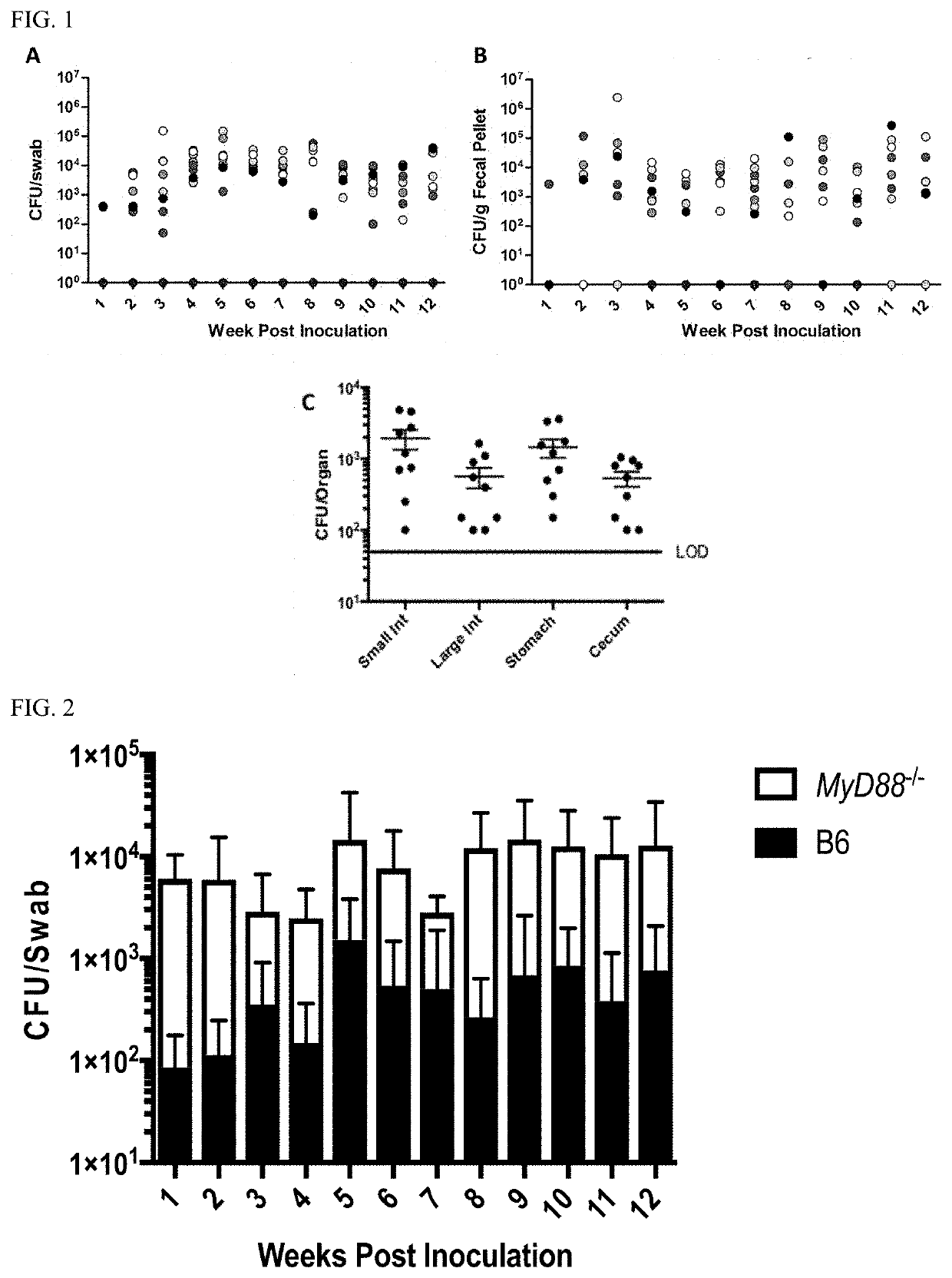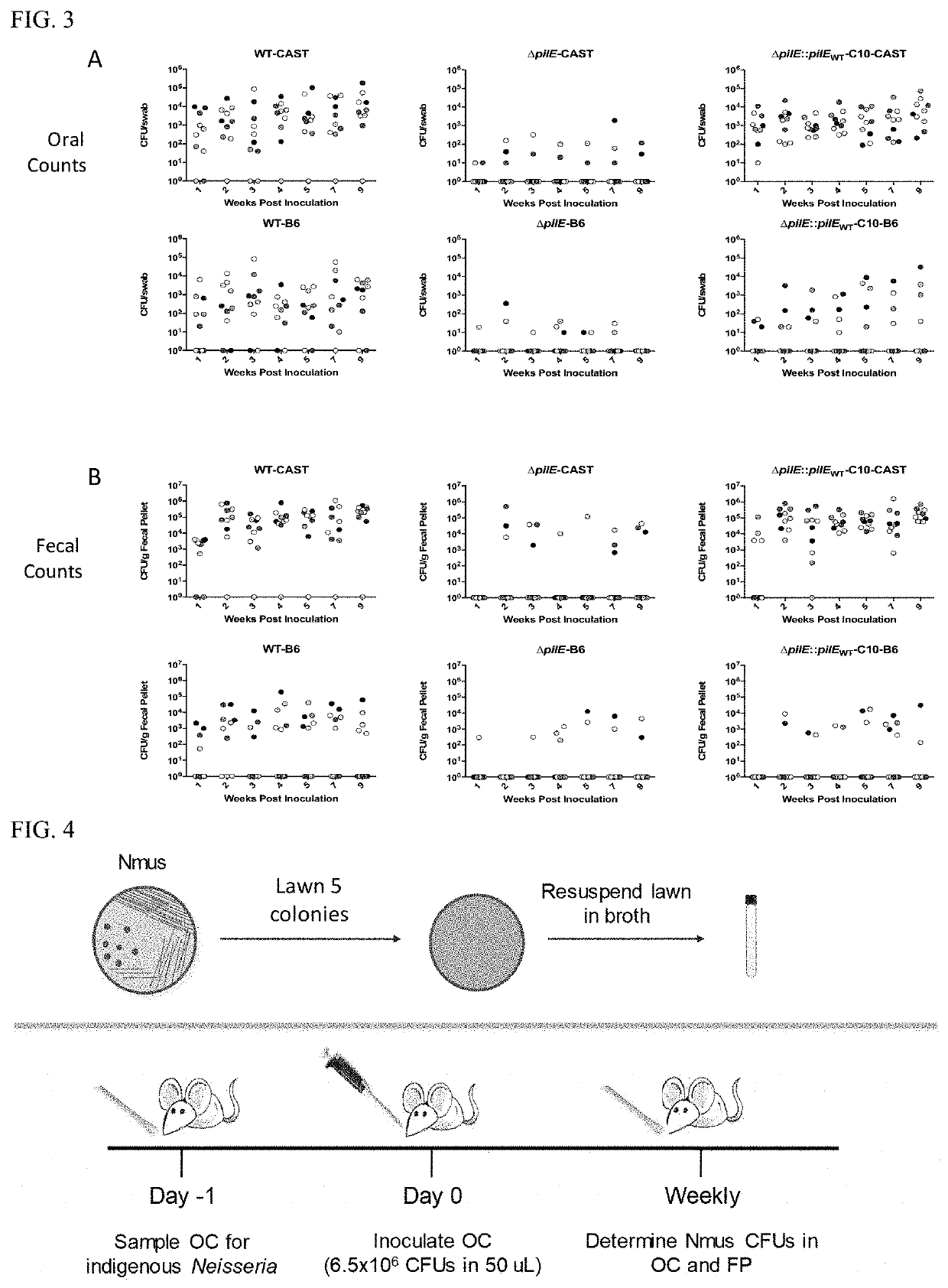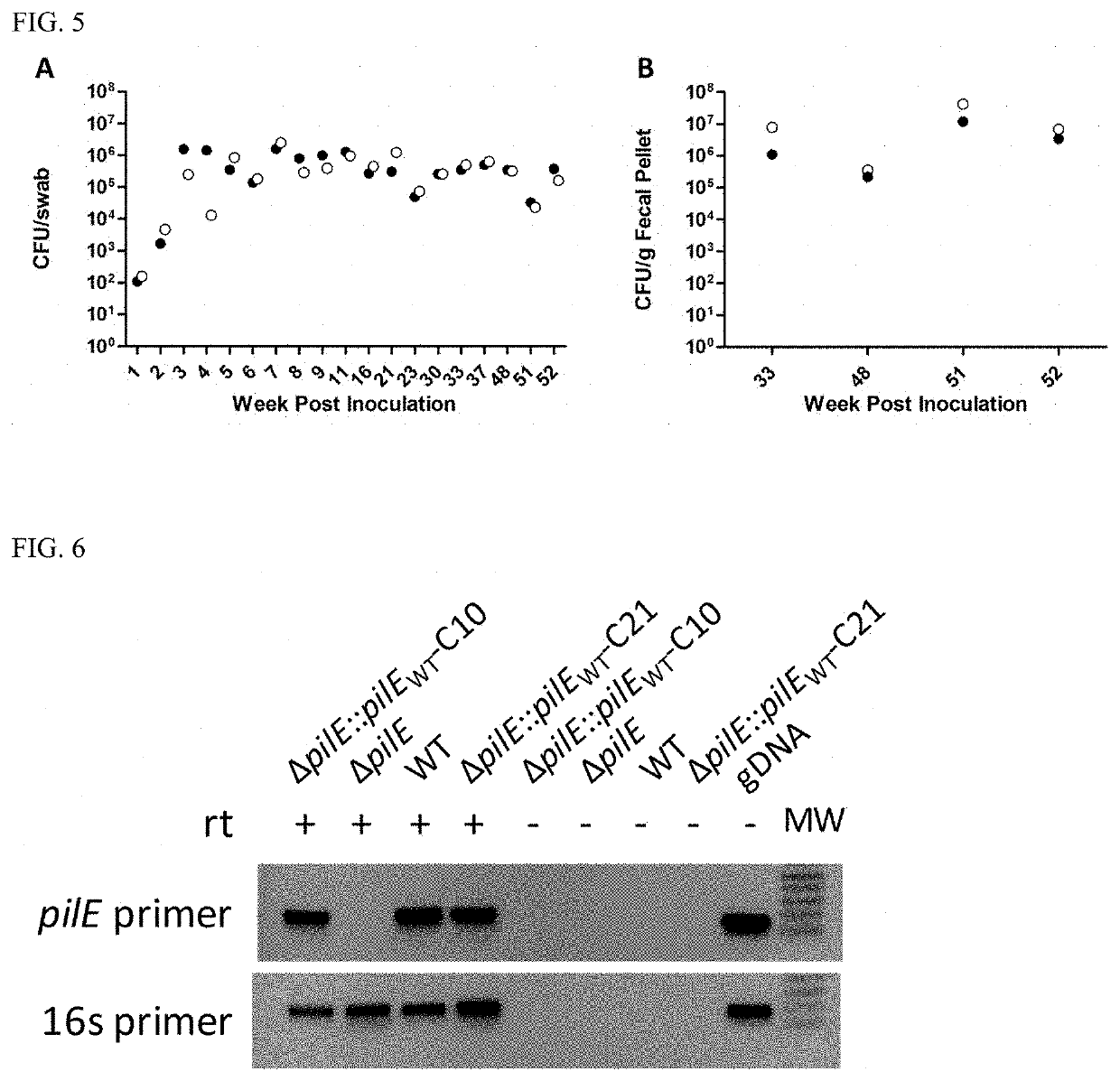Animal model system and uses thereof
a model system and animal technology, applied in the field of animal model system, can solve the problems of preventing the study of this aspect of the interaction between host and microorganism, and achieve the effect of facilitating the dissection of host determinants
- Summary
- Abstract
- Description
- Claims
- Application Information
AI Technical Summary
Benefits of technology
Problems solved by technology
Method used
Image
Examples
example i
Materials and Methods
[0073]Generation of the Rifampicin-Resistant N. musculi Strain.
[0074]AP2365, a naturally occurring Rifampicin resistant (RifR) variant of Neisseria musculi type strain, was isolated by plating AP2031 on GCB (Becton Dickinson) agar containing Rifampicin (50 mg / L).
Mouse Strains.
[0075]All inbred mouse strains and Collaborative Cross parental strains were obtained from The Jackson Laboratory (Bar Harbor, Me.). All animal protocols were approved by The University of Arizona IACUC.
Mouse Inoculation Protocol.
[0076]Mice were rested in the University of Arizona mouse facility for two weeks before inoculation. The inoculation protocol is shown in FIG. 4. To determine the presence of Neisseria species in the indigenous flora of the animals, the oral cavities of mice were swabbed; the swabs were suspended in GCB medium base (Becton Dickinson) plus Kellogg's Supplement I and II, and dilutions of the suspensions were plated on GCB agar containing Vancomycin (2 mg / L) and Trime...
example 2
[0085]N. musculi Colonizes the Oral Cavity and Gut of Mice in a Mouse Strain Specific Manner.
[0086]Nmus was isolated from the oral cavity of a wild mouse, Mus musculus domesticus (Weyand N J, et al., 2016. Int J Syst Evol Microbiol 66:3585-93). Repeated attempts to culture Neisseria from the oral cavity of inbred mice from Jackson Labs and Taconic were unsuccessful. Since inbred lab mice do not harbor Neisseria, this provided an opportunity to test the susceptibility of these animals to Nmus colonization.
[0087]The Collaborative Cross (CC) is a new powerful tool in mouse genetics that allows the linkage of alleles with phenotypic traits (Aylor D L, et al., 2011. Genome Res 21:1213-22). Nmus was tested on selected CC founder strains. These strains include 5 conventional, widely used inbred strains, and 3 wild-derived inbred strains from distinct Mus musculus subspecies (TABLE 1). The wild derived strains are CAST, from wild mice trapped in Thailand belonging to a distinct subspecies, ...
example 3
[0094]N. musculi Colonizes the Entire Gastrointestinal Tract of Mice.
[0095]The location of Nmus in the gastrointestinal tract of 3-month colonized CAST mice was examined. The stomach, small intestine, large intestine and cecum of necropsied animals were flushed with sterile saline to remove luminal content, and the tissues were homogenized and plated on selective agar. Nmus was recovered from all sampled sections of the gut (FIG. 1C). The large numbers of Nmus recovered from tissue-associated gut samples long after inoculation indicates that the commensal was not simply in transit from the OC.
[0096]To determine whether Nmus could be horizontally transmitted, 2 colonized CAST mice were cohoused with 3 naïve CAST or B6 mice for 12 weeks. None of the uninoculated mice became colonized. To determine whether the endogenous flora influenced colonization, 4 B6 and 4 CAST mice were cohoused for 12 weeks before inoculation. This did not alter colonization susceptibility of either mouse. More...
PUM
 Login to View More
Login to View More Abstract
Description
Claims
Application Information
 Login to View More
Login to View More - R&D
- Intellectual Property
- Life Sciences
- Materials
- Tech Scout
- Unparalleled Data Quality
- Higher Quality Content
- 60% Fewer Hallucinations
Browse by: Latest US Patents, China's latest patents, Technical Efficacy Thesaurus, Application Domain, Technology Topic, Popular Technical Reports.
© 2025 PatSnap. All rights reserved.Legal|Privacy policy|Modern Slavery Act Transparency Statement|Sitemap|About US| Contact US: help@patsnap.com



